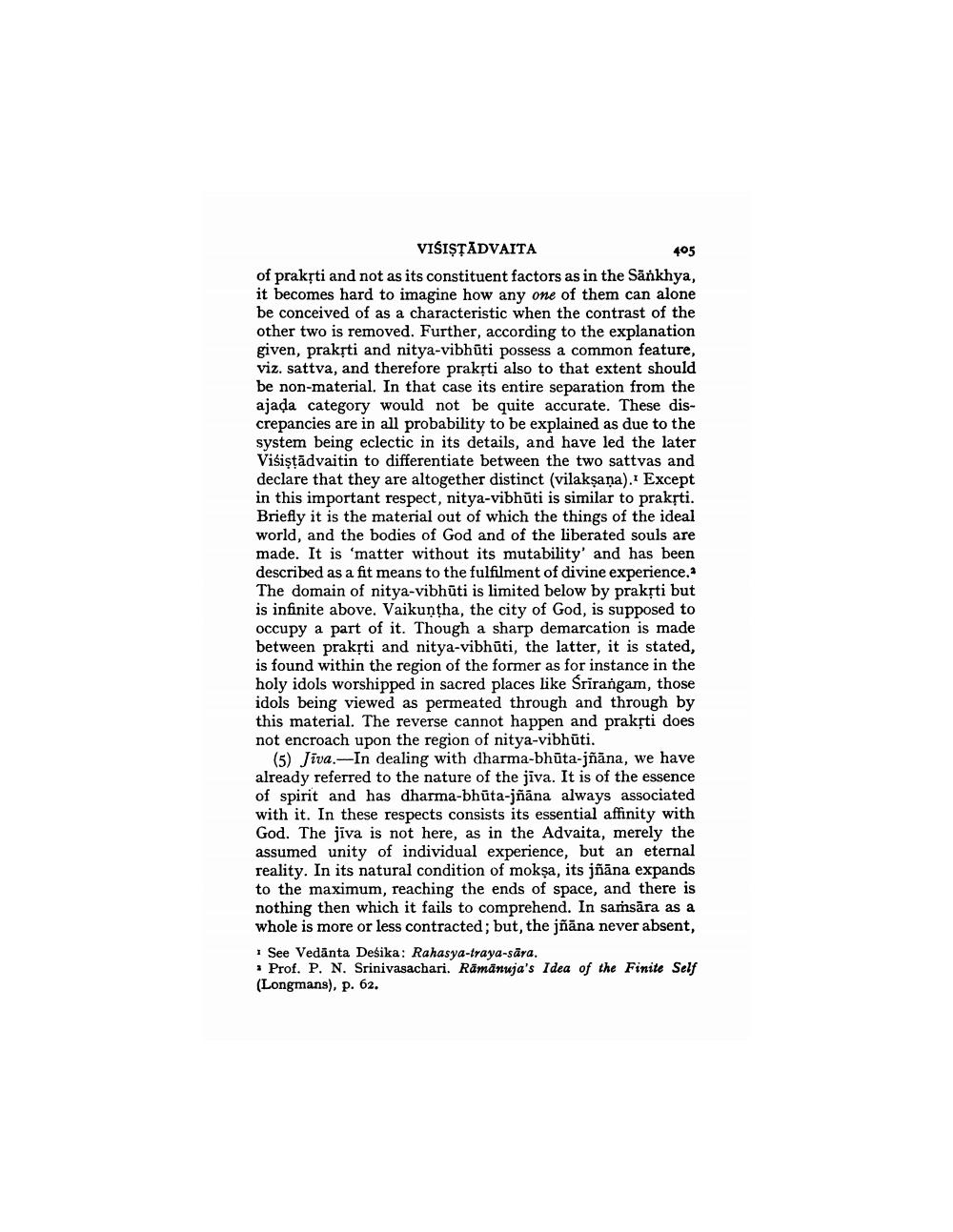________________
VIŠIŞTĀDVAITA
405 of praksti and not as its constituent factors as in the Sankhya, it becomes hard to imagine how any one of them can alone be conceived of as a characteristic when the contrast of the other two is removed. Further, according to the explanation given, prakrti and nitya-vibhūti possess a common feature, viz. sattva, and therefore praksti also to that extent should be non-material. In that case its entire separation from the ajada category would not be quite accurate. These discrepancies are in all probability to be explained as due to the system being eclectic in its details, and have led the later Višiştādvaitin to differentiate between the two sattvas and declare that they are altogether distinct (vilaksana). Except in this important respect, nitya-vibhūti is similar to praksti. Briefly it is the material out of which the things of the ideal world, and the bodies of God and of the liberated souls are made. It is 'matter without its mutability' and has been described as a fit means to the fulfilment of divine experience." The domain of nitya-vibhūti is limited below by praksti but is infinite above. Vaikuntha, the city of God, is supposed to occupy a part of it. Though a sharp demarcation is made between praksti and nitya-vibhūti, the latter, it is stated, is found within the region of the former as for instance in the holy idols worshipped in sacred places like Srirangam, those idols being viewed as permeated through and through by this material. The reverse cannot happen and praksti does not encroach upon the region of nitya-vibhūti.
(5) Jiva.-In dealing with dharma-bhūta-jñāna, we have already referred to the nature of the jiva. It is of the essence of spirit and has dharma-bhūta-jñāna always associated with it. In these respects consists its essential affinity with God. The jiva is not here, as in the Advaita, merely the assumed unity of individual experience, but an eternal reality. In its natural condition of mokşa, its jñāna expands to the maximum, reaching the ends of space, and there is nothing then which it fails to comprehend. In samsāra as a whole is more or less contracted; but, the jñāna never absent,
See Vedānta Deśika: Rahasya-traya-sāra. • Prof. P. N. Srinivasachari. Rāmānuja's Idea of the Finite Self (Longmans), p. 62.




